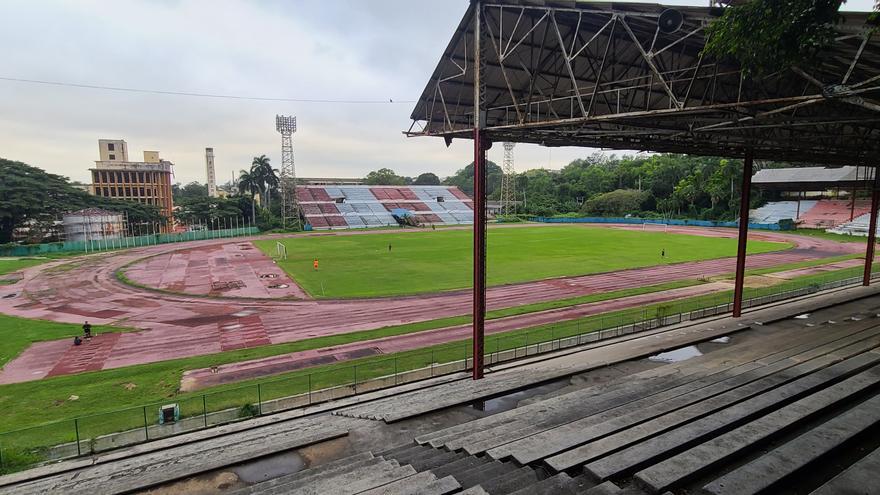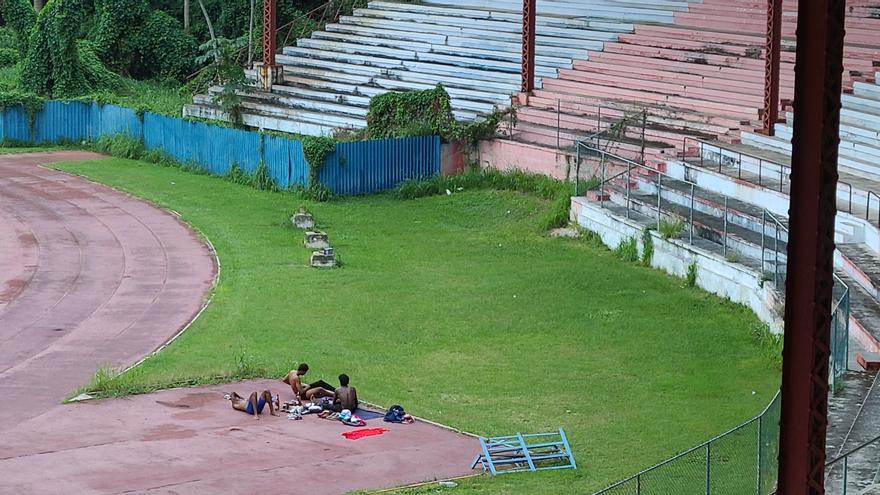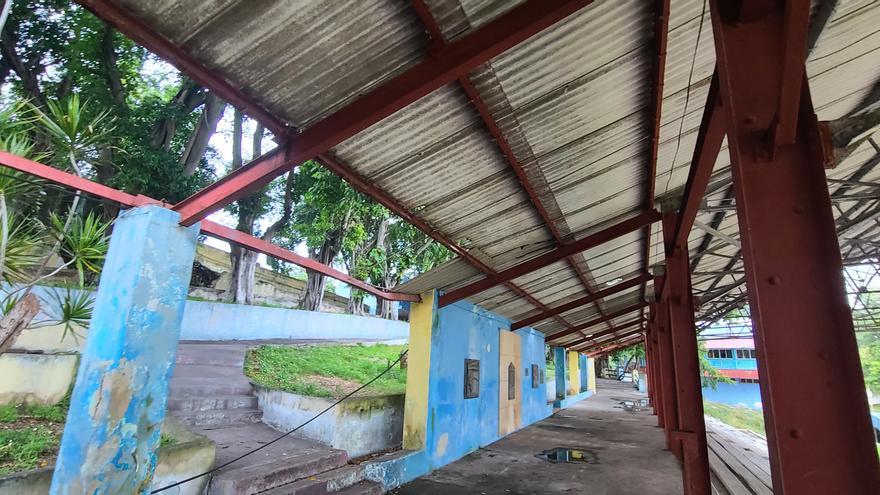
![]() 14ymedio, Pedro Espinosa, Havana, 18 January 2024 — “It’s a pasture,” says the athletic coach as he contemplates the desolation of the Pedro Marrero stadium in Havana’s Playa district. The soccer field originally belonged to the old Tropical Brewery. Maradona once played here but it is about to turn 100 years old and looks its age. Though the grass is worn and and the track is full of potholes, the coach’s students run wild here.
14ymedio, Pedro Espinosa, Havana, 18 January 2024 — “It’s a pasture,” says the athletic coach as he contemplates the desolation of the Pedro Marrero stadium in Havana’s Playa district. The soccer field originally belonged to the old Tropical Brewery. Maradona once played here but it is about to turn 100 years old and looks its age. Though the grass is worn and and the track is full of potholes, the coach’s students run wild here.
There is no trace of the eight million dollars that the International Federation of Association Football (FIFA) gave Cuba between 2016 and 2022 to improve its facilities.
It was never a high-end stadium but at least it was well maintained and had some moments of fame. Like that day in June 2000 when the Argentine soccer player scored a goal right before checking himself into a Cuban drug addiction clinic at Fidel Castro’s urging. Times have changed. “No one plays soccer here anymore,” the coach tersely admits.
The fragile zinc roof totters on rusty columns covered in graffiti, the walkway walls need painting and chunks of the stone benches are missing
His colleagues in the provincial athletics program are waging a small battle with the National Sports Institute (INDER). Athletes need a space to train, they argue, and no one has played at Pedro Marrero for years. They prefer the slightly less precarious facilities of the Pan-American Village. The only good to come out of it, the coach says, is that officials finally turned it over to the people who actually use it.
At the moment those are chamacos, street kids who come here to play, and teenage athletes whom their coach cajoles from the stands. On the field, the boys do what they can. The rain has left the grass sticky and wet, and water gathers in potholes on the track. It is impossible to have a clean race. They avoid the puddles by jumping over them.
If the field and the track are bad, the stands are not much better. The fragile zinc roof totters on rusty columns covered in graffiti, the walkways need painting and chunks are missing from the stone benches, which look like they have been hit with a sledge hammer. In the distance, the moldy green scoreboard displays two numbers — three and two — from the last time someone was in charge of keeping time and keeping score.

In February 2023, FIFA officials visited several Havana stadiums and decided to prioritize the restoration of the Polar field over Pedro Marrero. At the time, they were deciding how to invest the international subsidy for the development of Cuban soccer through FIFA’s Forward 3.0 program.
Luck was not on Pedro Marrero’s side. The officials limited themselves to “analyzing possible projects” and announced that soon – they did not give a date – a master plan to refurbish the facilities would be finalized. “The project is not as far along as that of Polar, on which work is about to begin, but we are aware of the interest and support the local government in carrying it out,” they said. Nothing else.

In December, a FIFA report revealed that the organization had invested eight million dollars in Cuba between 2016 and 2022. The announcement raised several questions. With stadiums like the Pedro Marrero still in terrible condition, what did the Cuban federation do with that money? The official response was that the money went towards events, salaries, training of managers and the repair of the Antonio Maceo stadium in Santiago de Cuba, where artificial turf was installed. The explanation did not convince anyone and raised other, more disturbing questions about FIFA’s complicity in misspending of these funds.
Some half-hidden clues on the walls of the stadium provide some indication of what it was like in its early days. A plaque, signed by US Major League players, acknowledges the “altruism” of the directors of the New Havana Ice Factory for having built the stadium in 1929. Originally known as the Grand Tropical Brewery Stadium, it could seat 28,000 spectators. It was also where, in 1930, the Central American Games were first played.

There is also a plaque from 1956 to one particular benefactor who was also the heir to the brewery, Julio Blanco Herrera, along with another that commemorates the first amateur baseball game to be played in Latin America, in 1939.
When it came to renaming the sports complex after 1959, however, the memory of hundreds of Cuban athletes who had played there meant less than the name of Pedro Marrero, a participant in the assault on the Moncada barracks and a kind of patron saint of brewers. The official encyclopedia Ecured defines him as a “hero of food workers” for having been a driver at the Cristal brewery.
All that is in the past. Weeds from the nearby Almendares River threaten to swallow up the stadium. With the advancing vines and moss, it will soon cease to be a “pasture” and become a ruin like so many other iconic facilities built in Havana, and in the rest of the country, before 1959.
____________
COLLABORATE WITH OUR WORK: The 14ymedio team is committed to practicing serious journalism that reflects Cuba’s reality in all its depth. Thank you for joining us on this long journey. We invite you to continue supporting us by becoming a member of 14ymedio now. Together we can continue transforming journalism in Cuba.
